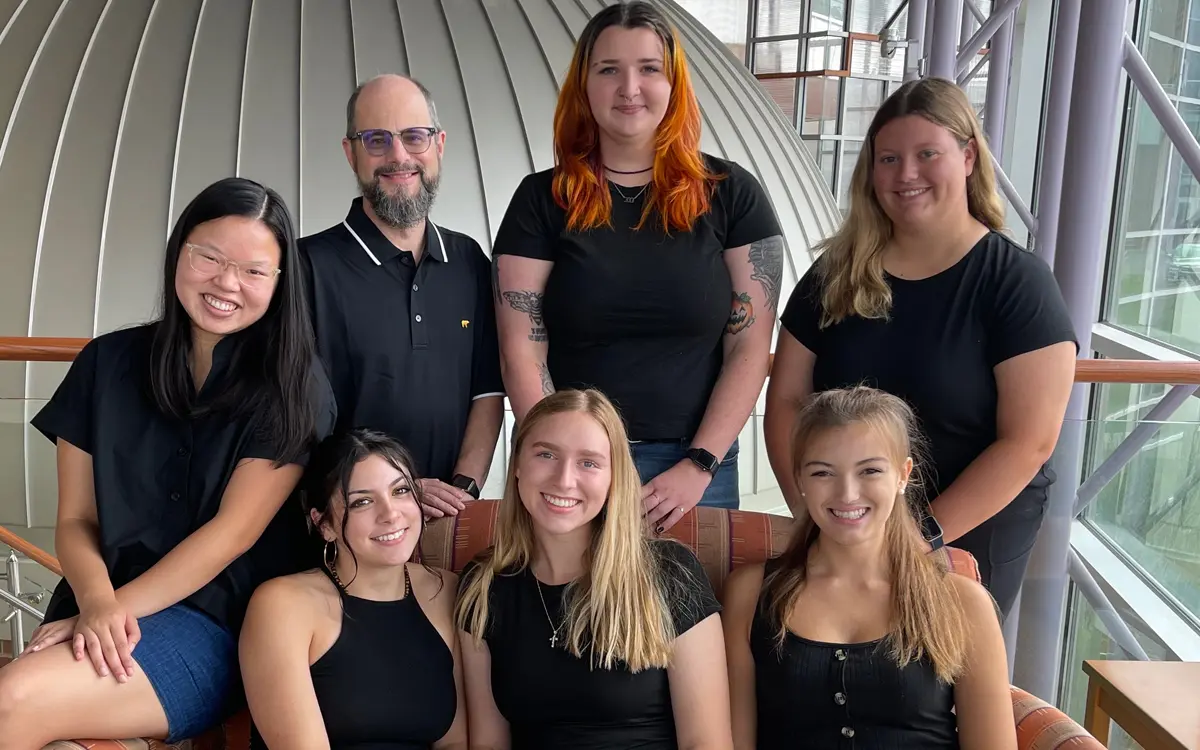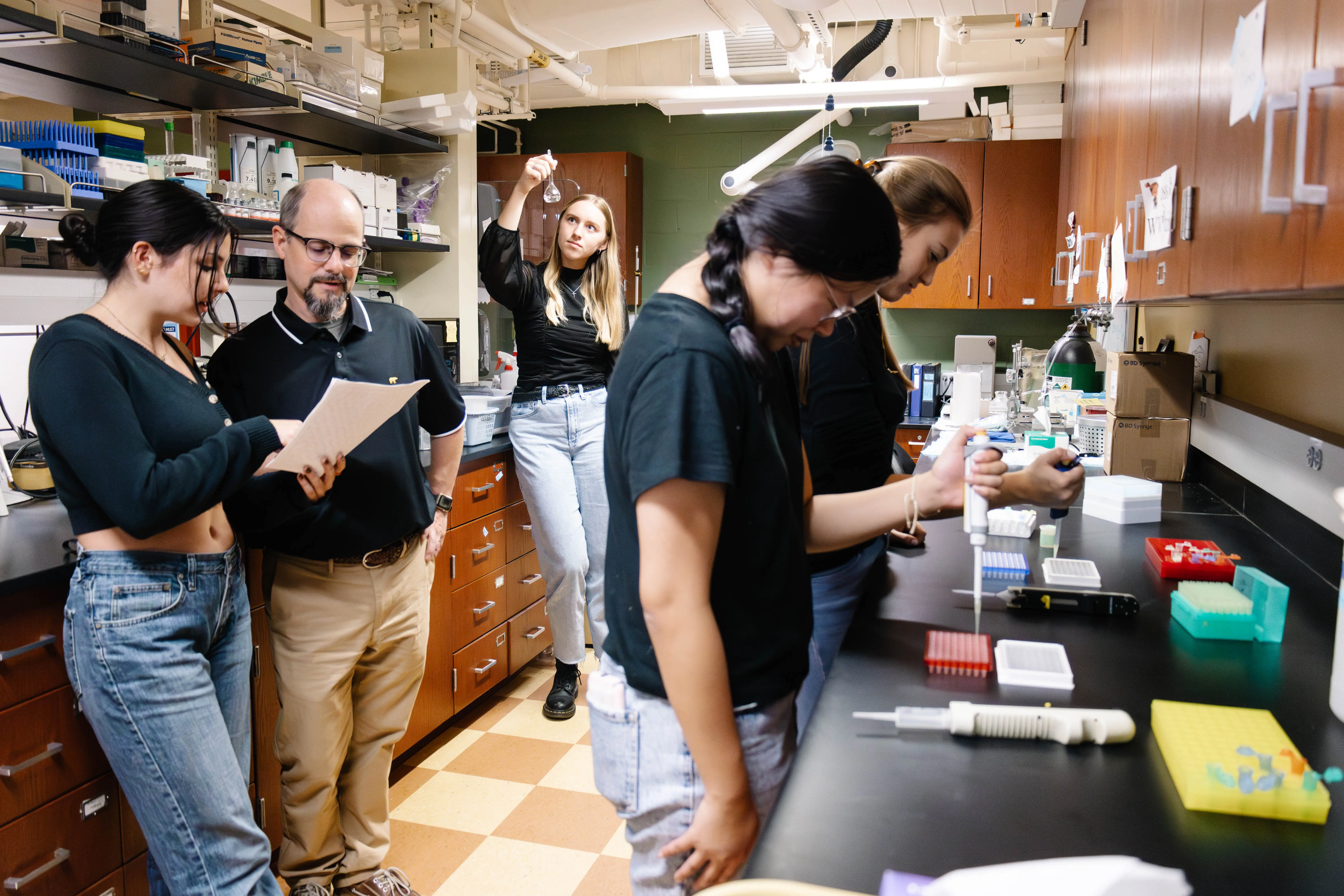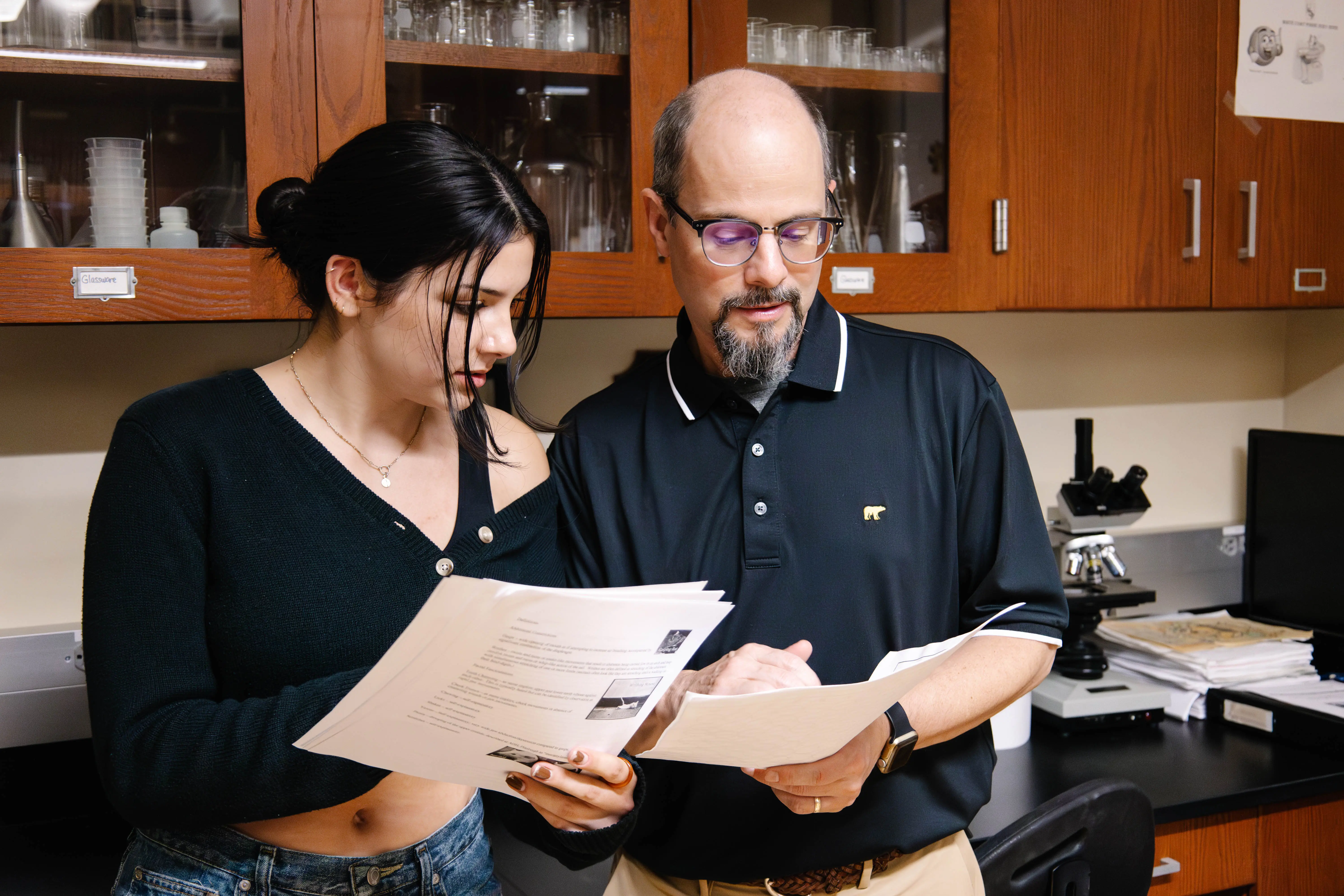LATROBE, PA — Associate professor of biology Dr. Michael Rhodes and five Saint Vincent College (SVC) students spent six weeks last summer serving nicotine and beer to mice. It wasn’t merely happy hour for a bunch of lab mice. The data from this research project might foster a better understanding of nicotine and alcohol addictions in humans.
The student group consisted of Mei Jenkins-Andrews C 24, Celia Monroy C 25, Julianna Lott C 25, Victoria Sarver C 25 and Stefanie Livelsberger C 25. Also helping was Sara Bollinger, a student at River Valley High School, whose mom is SVC senior lecturer of chemistry Beth Bollinger.
In humans, there is a high rate of co-occurrence between alcohol and nicotine addictions. The students studied how nicotine injections and nicotine withdrawal affected the mice’s alcohol consumption and stress hormone concentrations.
“We want, hopefully, to see some sort of correlation between alcohol and nicotine [consumption] and how people often abuse those two substances together,” Sarver said. “We're hoping that's the same with the mice. So, when we withdrawal [the substances from the mice], we hope it will lead to some sort of change in their behavior.”
The mice’s daily beer consumption per body weight was comparable to, or in some cases greater than, that of human alcoholics. After receiving daily nicotine injections for two weeks, the mice began withdrawing from nicotine. Behaviors were assessed with swim tests and marble burying tests.
“For a while, I had some hang-ups about using mice [with] nicotine and alcohol,” Monroy said. “I felt bad for them. But now I see how much research we're getting out of this project, what the data and the trends look like, and it's becoming really interesting. We can say, ‘Oh, wow, this is correlated by science and data, and we can use this going forward in other projects.’”
Lott is interested in animal behavior and plans to apply to veterinary school, so she was keen to join Dr. Rhodes’ internship group. “I wanted to get as much animal experience and research experience as I could, especially because I'll be working with a variety of animals,” Lott said.
“This project aligned with my [psychology] minor and pre-med [track] because I’m trying to see how people try to quit addictions,” said Jenkins-Andrews, a biology major.
This spring, the team will dive into its data analysis. According to Dr. Rhodes, initial results suggest that mice who were experiencing withdrawal from nicotine had increased depressive behaviors and may have consumed more beer than the control mice.
“It also appears there were interesting sex differences in the depressive behaviors, with male animals showing more depressive behaviors than female animals during the withdrawal period,” Dr. Rhodes said. “We will need to correlate the anxiety and depressive behaviors with the amount of alcohol consumed to determine if any interesting patterns emerge.”
Dr. Rhodes hopes to present the project’s conclusions at the annual Society for Neuroscience convention in 2024 in Chicago or in 2025 in San Diego. The students who were fully invested in the project will be invited to attend and participate in the presentation.
PHOTOS: Dr. Michael Rhodes and his research group


